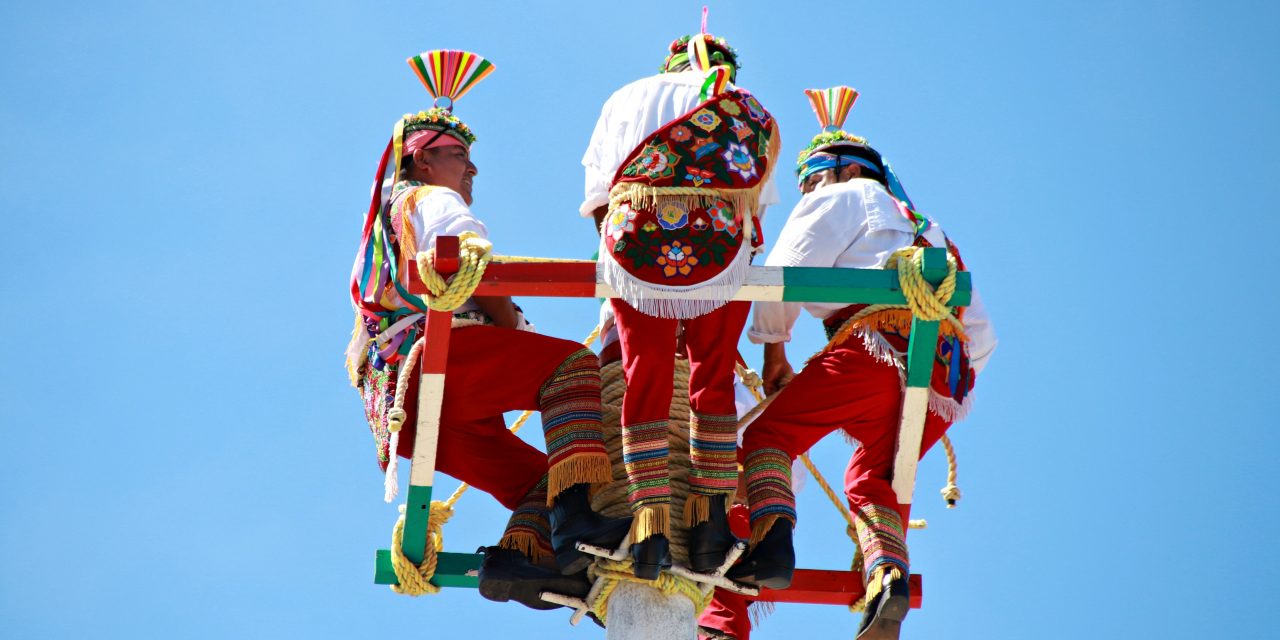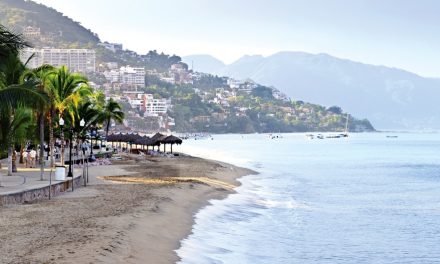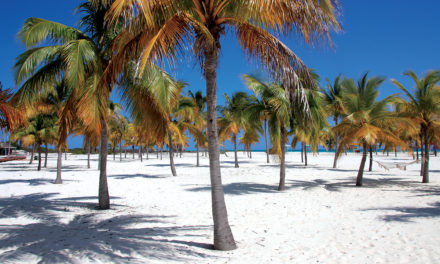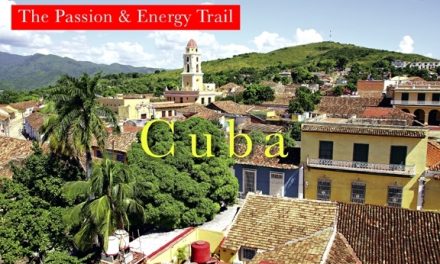Mexico
Puerto Vallarta’s Papantla Flyers!
Article and photography by Steve Gillick
While strolling along the Malecon, Puerto Vallarta’s beautiful seaside promenade, travelers can see more than just scores of noisy Brown Pelicans when they look toward the sky. In fact, there is a 23 meter (75 foot) metal pole standing between the Malecon and Banderas Bay, on which five men in colorful traditional clothing sit.
While one man plays the flute and drum, the other four fall backward. A rope attached to one of each man’s ankles slowly unwinds as the ‘flyers’ circle the pole and descend to the sandy beach below. After a few minutes they climb the pole and prepare for another descent.
What might appear as a busker act is actually a 900 year old ritual. Kevin Simpson, our Art Walk guide, and the owner of Colectika, an art gallery showcasing the works of local indigenous artists, explained that the ‘flyers’ are members of the Totonaca tribe that traces its origins to the Pre-Columbian city of El Tajin, once located in the current municipality of Papantla in Mexico’s gulf state of Vera Cruz. According to legend, during a severe drought, the Totonaca decided to appeal for help from Xipe Totec, the god of the Spring. In order to attract his attention, they cut down the tallest, straightest tree they could find, erected it in the city, decorated their bodies with feathers to resemble birds, and then attached vines to their feet and to the top of the pole so they could ‘fly’.
Today the sacred symbolism remains. The flute and drum player represents the center of the universe. The four flyers represent the cardinal directions and the thirteen revolutions they make around the pole as they descend, represent the 52 weeks of the year.
The Papantla Flyers are a great example of the rich cultural heritage Puerto Vallarta offers its visitors.
www.puertovallartaartwalk.com

















